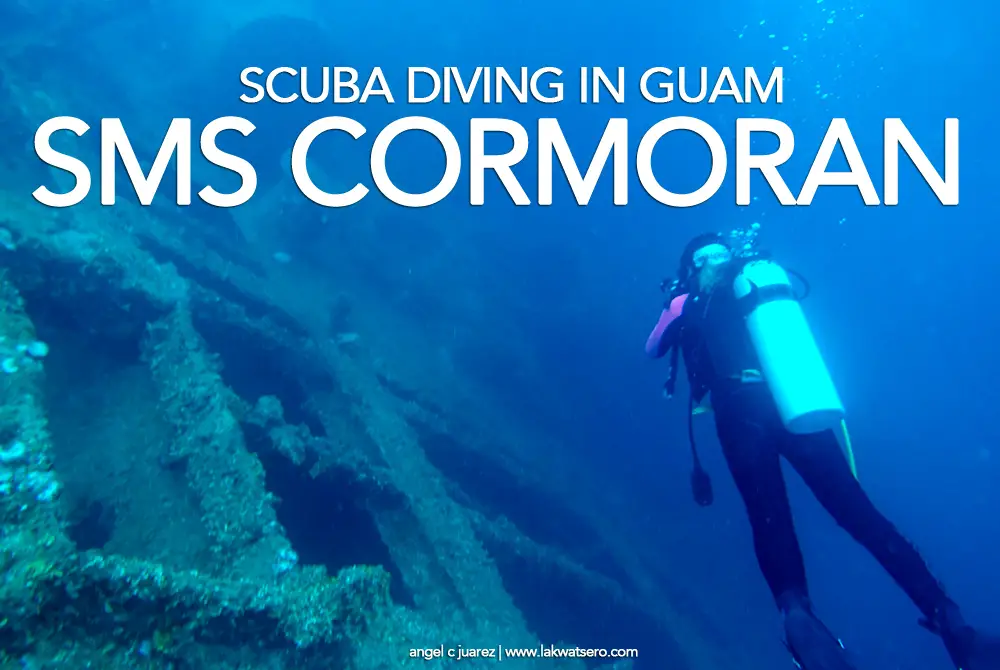Guam and the Philippines share a lot of features. From language, culture, history, climate, religion, traditions, food and even underwater. Yes! Even under underwater!
This comes without a doubt as Guam and the Philippines sit in the warm tropical waters of the Pacific. But if there’s one underwater feature that significantly differs the former from the latter, it definitely would be the ship wrecks of SMS Cormoran II and Tokai Maru that both lie in the seabed of Apra Harbor.
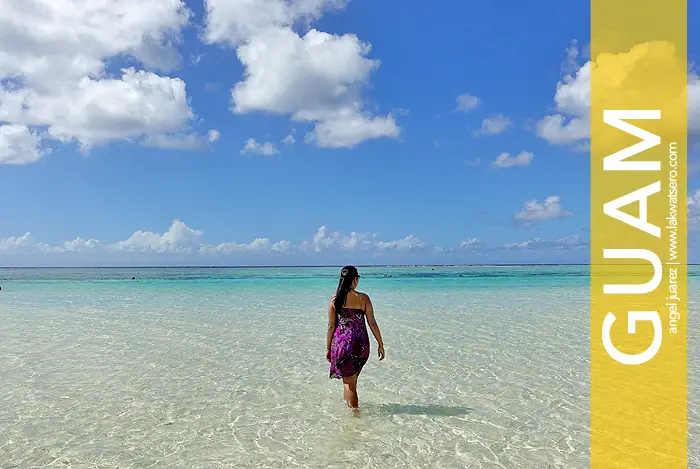
You’ll probably wonder – but the Philippines has a lot of submerged ship wrecks?!
I know right! We have some in Coron, Subic and Puerto Galera, to name a few. Coron alone has a great collection of underwater wrecks, most are Japanese war ships sank by American forces during Word War II. But the wrecks of Cormoran and Tokai Maru are different. They are both remnants of two world wars, now resting underwater, side by side. Making the site as the the only place in the world where one can touch two ship wrecks from different world wars!
World War I: SMS Cormoran II
The SMS Cormoran II was a German merchant raider that was intentionally scuttled by its captain, Adalbert Zuckschwerdt, on April 7, 1917.
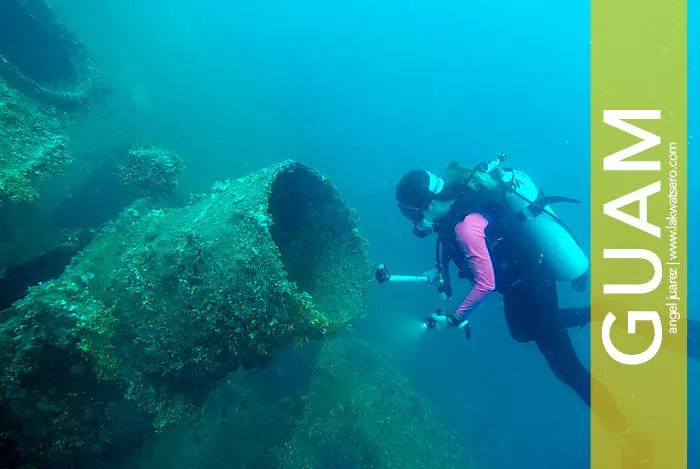
The decision to intentionally sink the ship was made by Captain Zuckschwerdt who refused to surrender the vessel to the Americans on the outbreak of United States war with Germany which also marked the entry of the US to World War I. Nine crew members perished and they were buried with full military honors in the Naval Cemetery in Agana, Guam.
The wreck of Cormoran now rests on her starboard side at 39 meters (130 feet) below the surface of Apra Harbor.
World War II: Tokai Maru
The Tokai Maru, on the other hand, was a Japanese cargo ship under contract with the Japanese Navy during World War II. It was damaged by a US submarine on January 27, 1943 and eventually sank by a US warship on August 27, 1943.
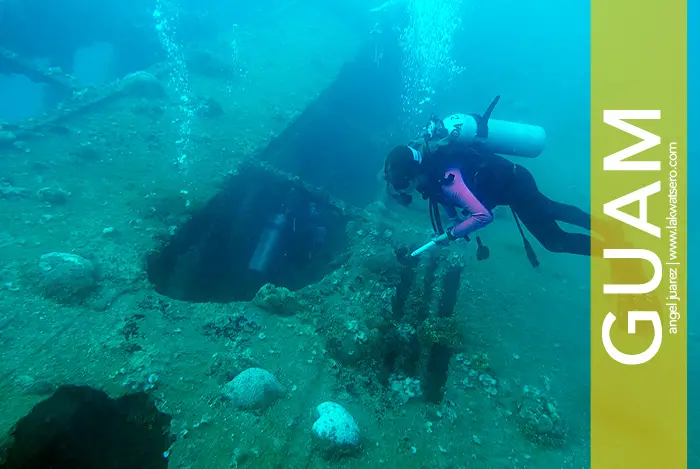
If it was by coincident or by fate that it settled on the same spot as the Cormoran, no one really knows. It now lies at 39 meters (130 feet) below, side by side with the World War I wreckage.
Centenary of SMS Cormoran II Scuttling
April 7, 2017 was a momentous day for Guam for it was the centenary of scuttling of SMS Cormoran II, an event commemorated with anniversary dives and wreath laying on the wreckage, as well as a memorial ceremony at the Naval Cemetery.
The day started early as guests and media converged in MDA Dock and sailed on Apra Harbor to the site where Cormoran scuttled. Three motorized boats transported all participants to the site including Mr. Michael Hasper, Deputy Head of Mission of the Embassy of the Federal Republic of Germany to Manila, the guest of honor. But the highlight of the event was the wreath laying on the wreck of Cormoran by scuba divers lead by Miss Pilar Laguania, Director for Global Marketing of Guam Visitors Bureau. The dive took around 35 minutes with Guam Territorial Band serenading the guests on the surface.
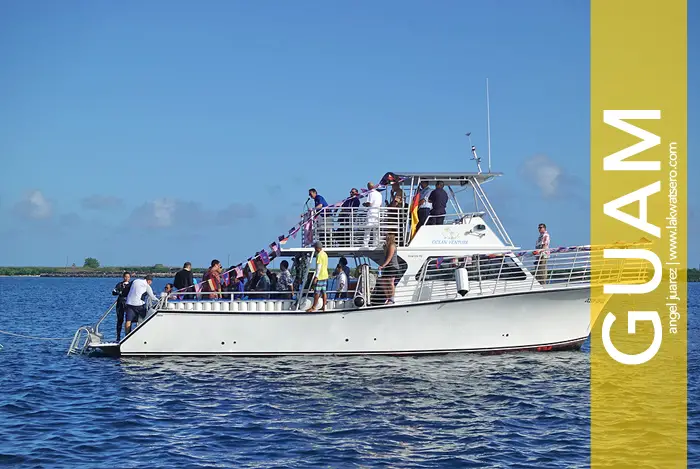
A memorial ceremony at Naval Cemetery followed. It was a short yet meaningful gathering to remember the nine casualties of the scuttling where a commemorative epitaph was unveiled. The nine were given honors in an event organized by Guam Visitors Bureau and attended by local government officials, representatives of Lomotek and Chamorro people, as well as guests and media from different parts of the world.

100-Year Anniversary Dive
Numerous dive shops heed the call of Guam Visitors Bureau to organize a 100-year anniversary dive but we were booked with PADI 5-star Micronesia Divers Association (MDA) at 3PM of December 8. We intended to dive on the actual day of scuttling, April 7, but all slots were already filled in ahead.
It was a different diving experience specially for someone who is accustomed to diving in the Philippines where you just get in to the boat, gear up, and stride to the water with your guide. In Guam, we had to go to the dive shop to rent our gear and diving equipment, bring them with us to the harbor, assemble it ourselves, dive on our own, and return the rented stuff to the dive shop after. As a result, I forgot to rent a wet suit! Thankfully, the water was warm enough for scuba diving in casual get up, around 26 degrees Celsius. It was my first time to dive in just a shirt and shorts!
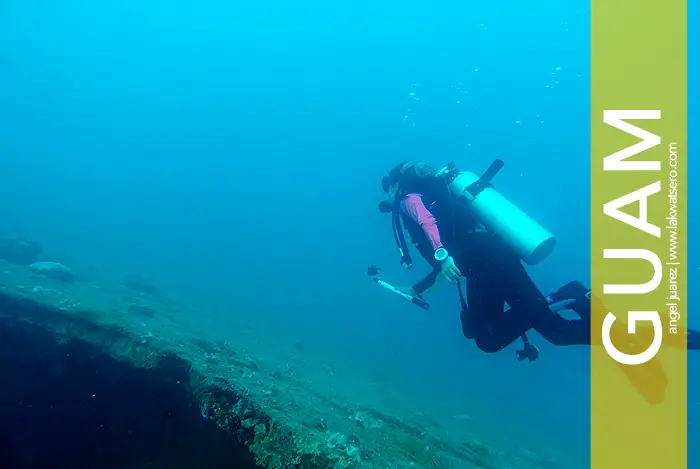
We arrived at the harbor with enough time to gear up and assemble our equipment. One good thing about the way of things in Guam is that we got to refresh and practice how to assemble the tanks, regulator and buoyancy device which I rarely do in the Philippines.
By and by, a briefing was conducted by the MDA staff. It was then that we found out that we will be diving on our own, in other words, there would be no dive guide to assist us. Well, we could have one but that would entail extra cost and advance arrangement was necessary. It came not as a surprise to everyone but us, myself and my dive buddy Liliane the Wanderlass. I told you, when you dive in the Philippines, everything is provided. Even the dive guide.
I felt a bit anxious but excitement overpowered. The thought of scuba diving with experienced buddy like Lil made me feel assured somehow.
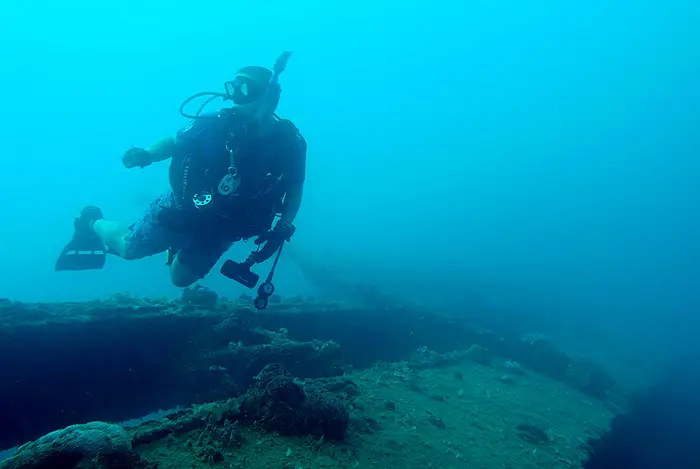
At exactly 3PM, the motor boat departed the harbor with a total of 16 scuba divers on board. It sailed westward and in no more than thirty minutes, we were already on the site. Partner by partner, the divers strode to the water. I told Lil that I would just follow her, she was in pink and I thought she would be a perfect subject in photos.
From the surface, we followed the buoy line that goes straight to the wrecks. As expected, the visibility turned from good to bad as we went deeper. The bad vis is typical of a wreck site where the silt deposit usually makes the water blurry. As we gradually descended, the images of Tokai Maru and Cormoran started to reveal. They were two huge ships! Wow! Once again, I was reminded of the wrecks of Coron.
I let Lil go ahead of me in fact, I was above her most of the time. I wanted her to be always on my line of sight. Truth is, I am used to that role with my perennial dive buddy Ate Claudia. I do not want my partner to be out of my sight, it makes me paranoid. I was conscious of our distance so as not to lost her on bad visibility. Thankfully, the current was almost non-existent.
We went to explore Tokai Maru first at around 110 feet. There were penetrable parts of the wreck so we swam through. We just went on finning and turned around when we reached the deepest part of the wreck at around 133 feet.
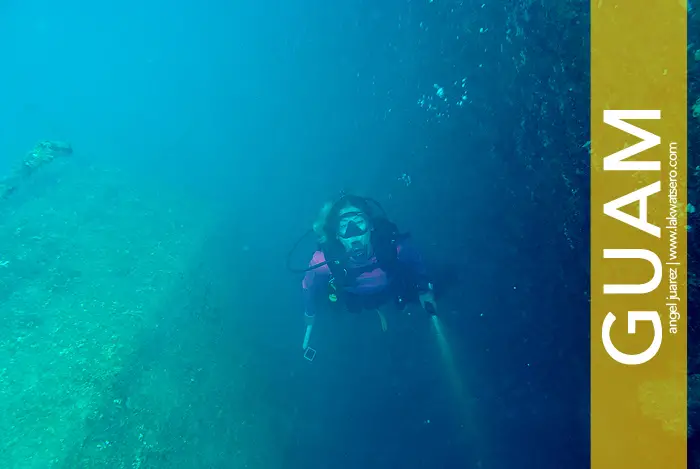
Touch Point of History
I was busy photographing the surface of Tokai Maru and Lil didn’t notice me. She went on until I could only see blurred shadow of her and her bubbles. I assumed she was seven to ten meters away so I hurried, afraid of losing her. Then I saw an ecstatic diver as I got closer, she was pointing to something. Apparently, it was where the two ship wrecks meet!
But the two don’t actually touch each other, there is a small space, perhaps two meters wide, between them. I signaled Lil to go the small space so I could take some shots and she willingly obliged. She extended her hands trying to reach both at the same time but she could not so she used her GoPro pole as extender.
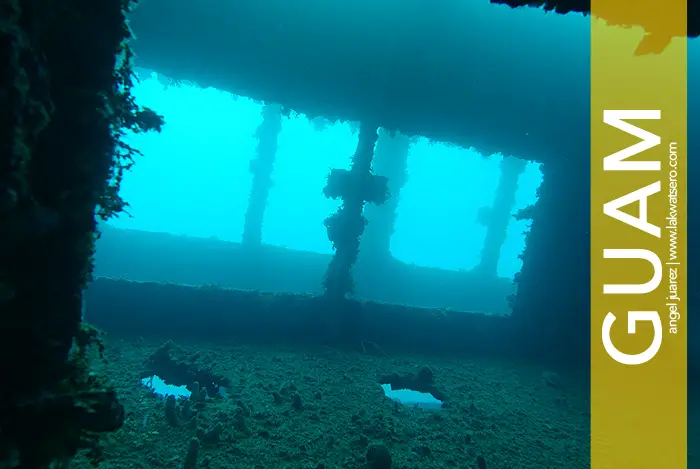
When it was my turn, I did the same. But I had no pole so I just imagined touching the two wrecks at once. It was surreal being in that small space – the “touch point” of the two sides of history!
We continued our dive on the surface and on the side of Cormoran, went through some penetrable areas until my air was just around 500 psi. I motioned safety stop to Lil and we gradually detached to the wrecks. Almost all scuba divers were already on the boat when we surfaced. All in all, we spent around 30 minutes in the water with maximum depth of 135 feet, and with just 350 psi of air left in my tank.
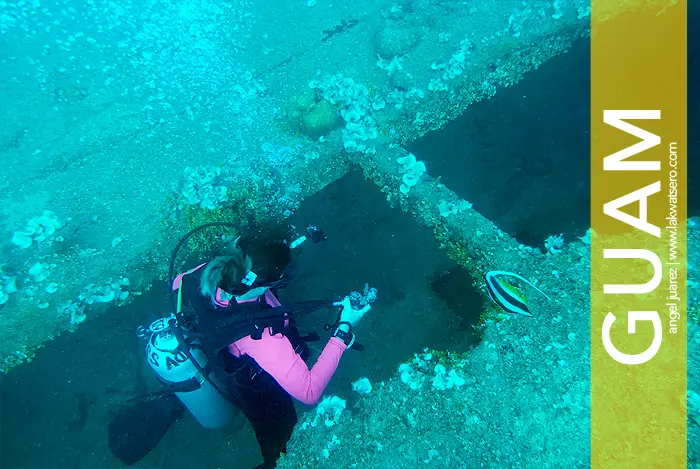
I could still vividly recall our dive and it still gives that surreal feeling. It is not everyday that I get to be in between the two sides of history! What made it more special was the fact that it was a commemorative dive for the 100th year of scuttling of SMS Cormoran. I feel honored to be with the Guamanian in remembering this moment in their history. With that, I thank Guam Visitors Bureau for the opportunity!
